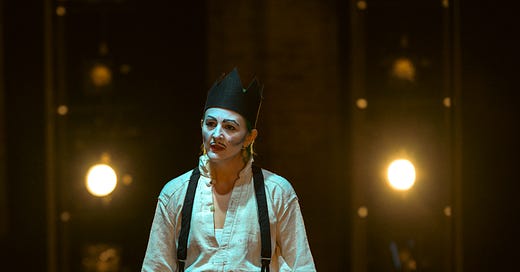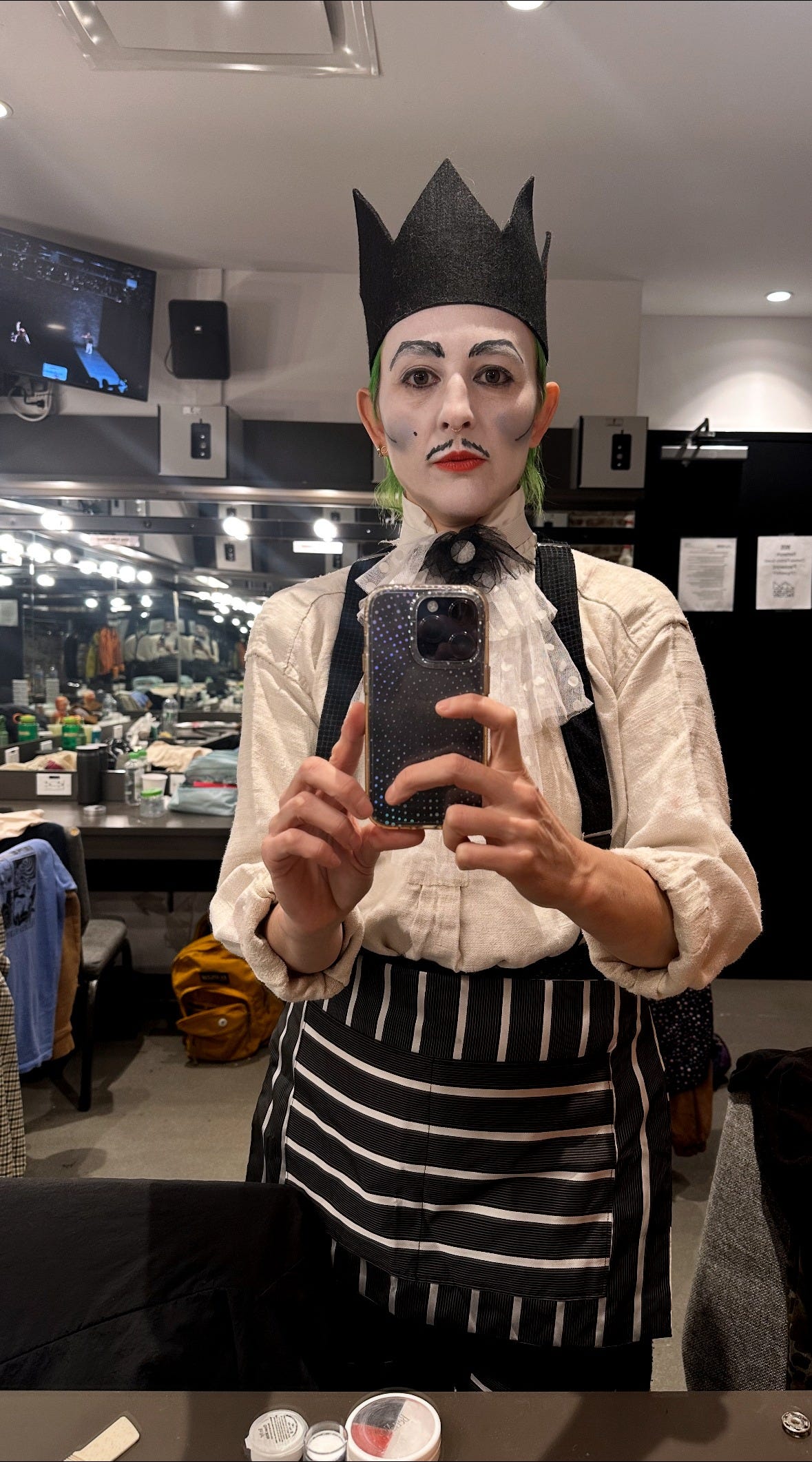I just got off the phone with a writer writing an article about non-binary dancers in ballet, and I had so many thoughts and feelings come up from our conversation, so I wanted to share some of them here.
One of the big things I’ve been thinking about lately, is how we are trained to play specific roles in ballet, and how those roles get conflated with who we actually are. This might apply to gender, or goodness, or “types.” But I wonder, do the roles we play onstage actually have to be who we are? Or can we use those roles to discover more of who we are, and, importantly, define who we are not?"
The last role I played onstage was in my own Ballez production. And while I came to realize that this role was an expression of my most evil inner voices, it is most certainly not the person I am in my day to day life, nor aspire to be.
photo by Mikhail Lipyanskiy
The role was the Doll-maker, who is the villain of Travesty Doll Play Ballez (after Coppélia). The Doll-maker forces the dolls to perform automated gender roles for the public’s enjoyment, and then punishes and abuses the dolls, breaking them irreparably, when they stray from their expected roles.
This character was exciting and complicated for me to play. I got to play a male coded role onstage…. I wore a mustache, suspenders and men’s clothing, and, I got to move with a sense of power and authority. There were many parts of me that were lit up and affirmed by this experience. As I darkened my eyebrows looking in the mirror, I felt my genderqueer Dancestor Nijinsky looking back at me.
But, I was also portraying an abusive, evil person. I had to hold the character’s disgust, displeasure and rage against the dolls when they became expressive and free with their genders. I had to walk out onstage after witnessing their glorious freedom, and instead of being joyous with them, I had to coldly regard them, and then perform choreographed physical abuse.
This experience called on me to resurrect the evil voices that have lived inside my head for decades, the voices that told me not to do anything or be anything other than what was expected by the binary gender ideals of the ballet world. When playing this role, I became the gatekeepers, the old guard, the patriarch, the conservator of “classical” values.
And it was painful.
What I felt, underneath the facade of rage, was the pain of all these people who are compelled to control others. I felt their fear of things getting out of control, of their lives becoming meaningless unless they upheld the values that were enforced on THEM when they were coming up through the same system of obedience. I felt the pain of how much they gave up in order to fit in, and how they needed to make others do the same, in order to not become passé relics, who sacrificed their own authenticity for no good reason. I felt grief. And backstage, in between sections of being onstage, I wept.
I wept for all my teachers and directors, and for all of the people out there who keep believing that this death grip on “tradition” is the only thing that will earn them respect or power. I wept for the parts of myself that had believed that the system, if I fit into it, would ever give me what I wanted- which was love, and, respect. And I wept for all those who lived and died believing that someday the system would give that to them.
And then I felt gratitude for being made an outsider at 17, for packing up my ballet bag and throwing out my pink tights. I felt gratitude that I got away, tinged with the sorrow that there was no way I could have stayed.
And somehow, on the other side of that role, I feel like I could do anything… could play anyone, because all the voices and all the roles already live inside of me. I was trained to be so many people that I was not, and I tried and tried, and all those experiences are there to be drawn upon. I can play anyone, because, now, I know who I am.
And so, when I was talking this morning about what roles young ballet dancers should be taught in their training, I told her — everything: male roles, female roles, heroes and heroines, cavaliers and princesses, and villains and peasants.
Because we are not the roles that we play, but sometimes, by getting to play the roles outside of what we consider to be “ourselves,” we realize who we actually are.





